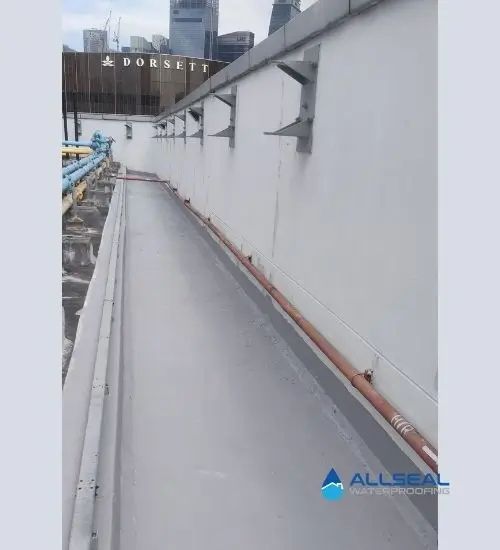Water seepage is a common problem for homeowners of landed properties in Singapore. These homes often look beautiful and are highly desired, but water issues can threaten their value and comfort. Understanding why seepage happens and how to prevent it is vital for owners and buyers alike. This guide will explain the causes, risks, and best ways to keep your landed home dry.
The Vulnerability of Landed Properties to Water Seepage in Singapore
Factors Contributing to Susceptibility
Singapore’s tropical climate means heavy rainfall is common throughout the year. When storms hit, water can quickly find its way into homes that aren’t properly protected. Landed homes tend to have large walls and expansive gardens, which can trap moisture if not maintained well. Older buildings, or those built with lower-quality materials, become even more prone to water leaks. Recent studies show that a significant percentage of landed properties experience seepage issues, especially in older neighborhoods.
Common Water Seepage Problems Faced by Landed Homes
- Water penetration through walls and around windows
- Moisture buildup in basements or underground structures
- Long-term damage such as wood rot, mold, or peeling paint
- Cracks in foundations that allow water to seep inside
These problems don’t just affect the appearance of a home. They can weaken structural components and pose health risks from mold growth.
Structural and Building Design Factors Increasing Water Seepage Risks
Building Materials and Construction Quality
Poorly chosen building materials can make a property more vulnerable. Lower-quality concrete, bricks, or sealants may crack or break over time, letting water in. Many older homes lack reliable waterproofing membranes or sealants around critical areas. As the infrastructure ages, these weak spots become easier for water to penetrate. Using high-quality waterproofing products during construction or renovation can significantly reduce seepage risks.
Architectural Features and Layout
Design elements can play a role in how water flows around a property. For example, yards that aren’t properly graded may direct water toward the house instead of away from it. Gutter systems that are poorly maintained or clogged can cause water to overflow onto walls, leading to seepage. Also, terraced or uneven land can trap water, especially after heavy rain.
Foundation and Basement Vulnerabilities
Certain types of foundations are more prone to water ingress. For landed houses in Singapore, basements or underground levels face unique challenges. The soil conditions, combined with high water tables, can lead to water seepage if foundations aren’t well-designed. Older buildings often have cracks or gaps in their basement walls, making them vulnerable to water intrusion over time.
Environmental and External Factors Contributing to Water Seepage
Singapore’s Climate and Rainfall Patterns
Singapore experiences an average annual rainfall of about 2,400 millimeters, with frequent storms that dump large amounts of water in a short period. These intense rain bursts increase pressure on drainage systems and walls, making seepage more likely. Plus, climate change has made weather patterns less predictable, leading to unexpected heavy rainfall episodes.
Land Fluctuations and Urban Development
Urban growth can also impact water seepage. Land subsidence or soil erosion may cause your property to shift, creating tiny cracks in the foundation. Construction activities nearby can alter natural water flow, increasing surface runoff. When drainage systems are poorly designed or maintained, excess water can accumulate and seep into a home’s structure.
Preventative Measures and Best Practices to Minimize Water Seepage
Building and Renovation Tips
- Always include proper waterproofing during new construction or major renovations.
- Regularly inspect roofs, walls, and foundations for cracks or damage.
- Keep gutters clean to prevent overflow during storms.
- Seal any cracks or gaps found during inspections promptly.
Landscape and Drainage Management
- Grade your yard so water flows away from the house.
- Install effective gutters and downspouts.
- Keep drainage pipes clear of debris.
- Consider planting vegetation that absorbs excess water.
Professional Assessment and Intervention
- Engage waterproofing specialists for detailed inspections.
- Use modern tools like moisture meters and infrared scans to identify hidden leaks.
- Repair foundation cracks quickly to prevent water intrusion.
- Consider waterproof membrane solutions for basements and underground parts.
Real-World Examples and Case Studies
A typical landed property in Singapore might suffer water seepage after a heavy storm. Some homeowners ignored signs and faced mold, wood rot, and peeling paint years later. Recently, a homeowner had persistent dampness in their basement. A professional team installed a waterproof membrane and improved drainage, which solved the problem. From these stories, we learn that early detection and proper repairs save money and preserve your property.
Conclusion
Landed homes in Singapore are prone to water seepage because of climate, design, and land conditions. Heavy rain, poor materials, and flawed layout increase the risk. But by taking simple steps—like regular inspections, good drainage, and professional help—you can keep your property dry and valuable. Protecting your home from water damage isn’t just about avoiding repairs; it’s about maintaining comfort, health, and peace of mind for years to come.
 :
https://www.pinterest.com/allsealwaterproofing
:
https://www.pinterest.com/allsealwaterproofing

